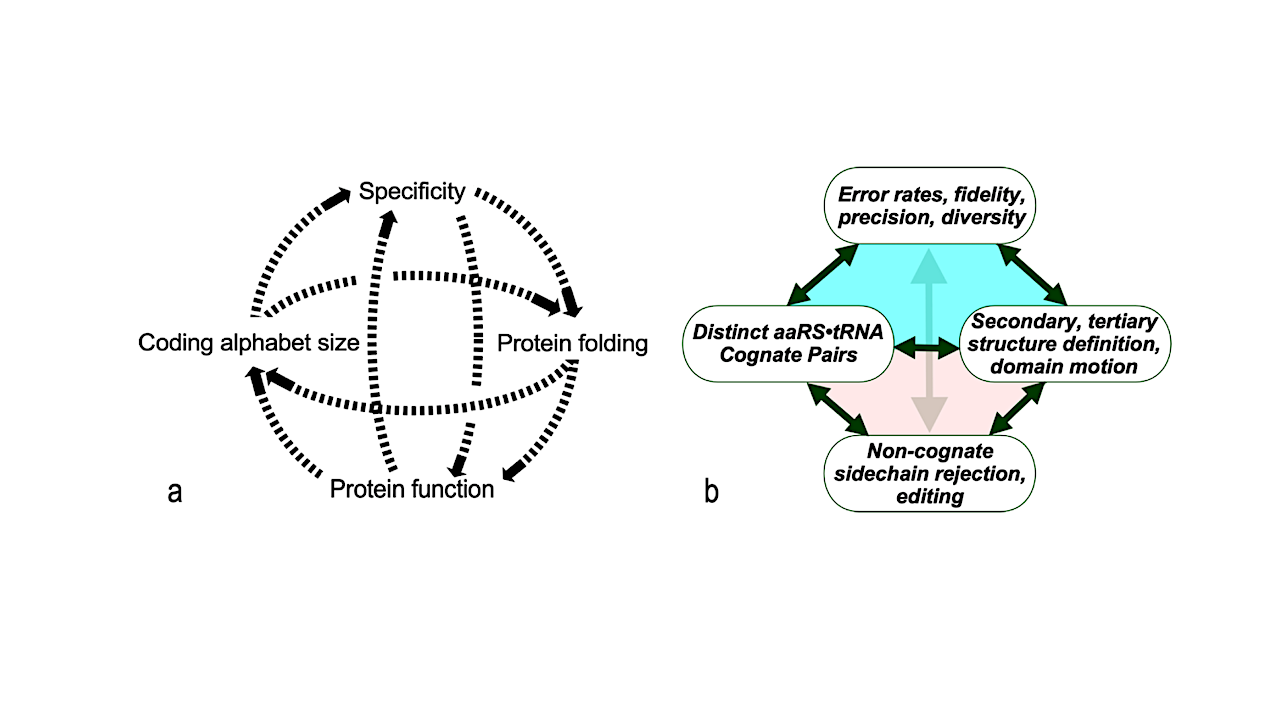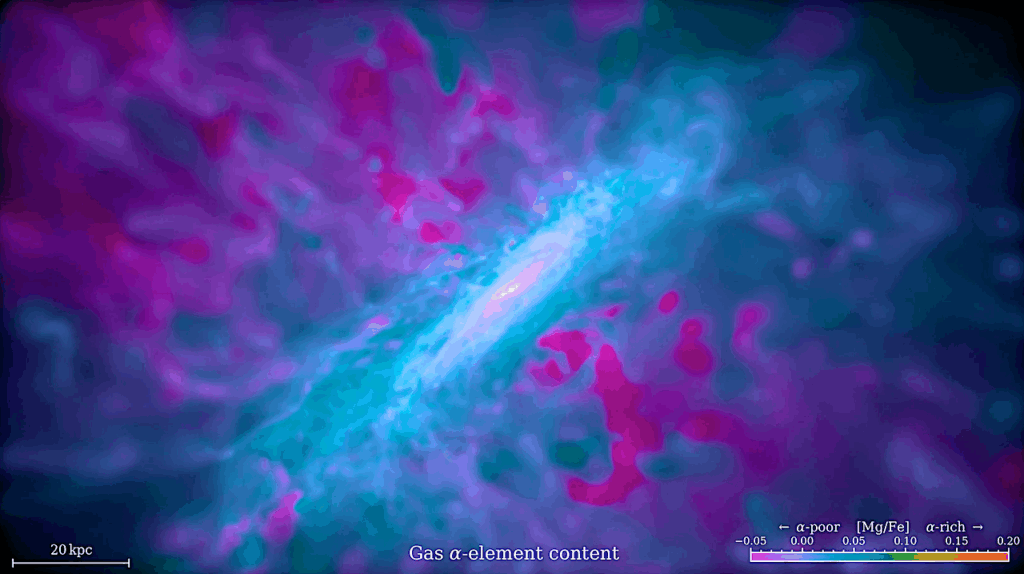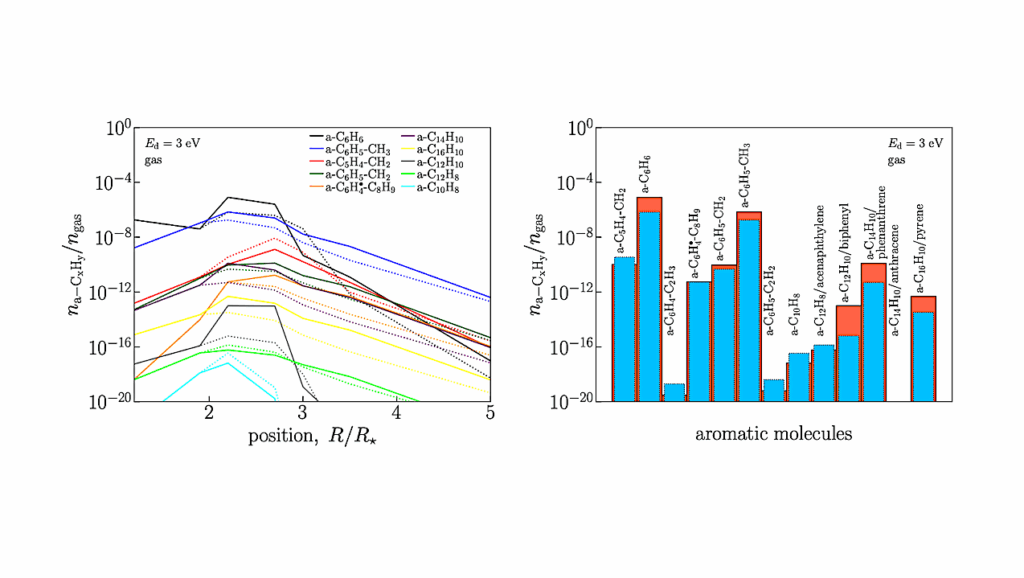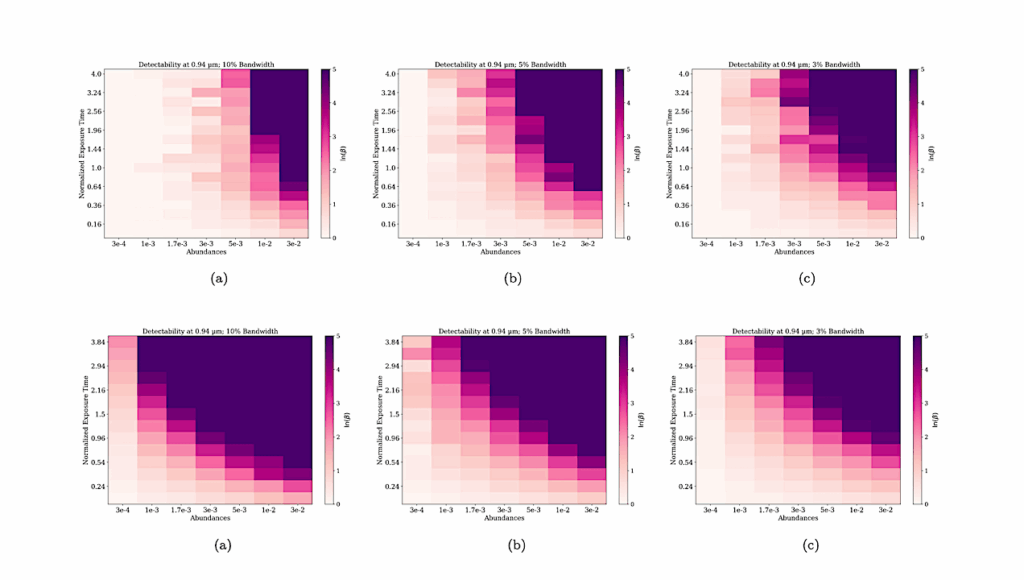Base Pairing Promoted the Self-Organization of Genetic Coding, Catalysis, and Free-Energy Transduction

How Nature discovered genetic coding is a largely ignored question, yet the answer is key to explaining the transition from biochemical building blocks to life. Other, related puzzles also fall inside the aegis enclosing the codes themselves.
The peptide bond is unstable with respect to hydrolysis. So, it requires some form of chemical free energy to drive it. Amino acid activation and acyl transfer are also slow and must be catalyzed. All living things must thus also convert free energy and synchronize cellular chemistry. Most importantly, functional proteins occupy only small, isolated regions of sequence space. Nature evolved heritable symbolic data processing to seek out and use those sequences.
That system has three parts: a memory of how amino acids behave in solution and inside proteins, a set of code keys to access that memory, and a scoring function. The code keys themselves are the genes for cognate pairs of tRNA and aminoacyl-tRNA synthetases, AARSs. The scoring function is the enzymatic specificity constant, kcat/kM, which measures both catalysis and specificity. The work described here deepens the evidence for and understanding of an unexpected consequence of ancestral bidirectional coding. Secondary structures occur in approximately the same places within antiparallel alignments of their gene products.
However, the polar amino acids that define the molecular surface of one are reflected into core-defining non-polar side chains on the other. Proteins translated from base-paired coding strands fold up inside out. Bidirectional genes thus project an inverted structural duality into the proteome. I review how experimental data root the scoring functions responsible for the origins of coding and catalyzed activation of unfavorable chemical reactions in that duality.
Charles W. Carter
Life 2024, 14(2), 199; DOI: 10.3390/life14020199
Astrobiology,








